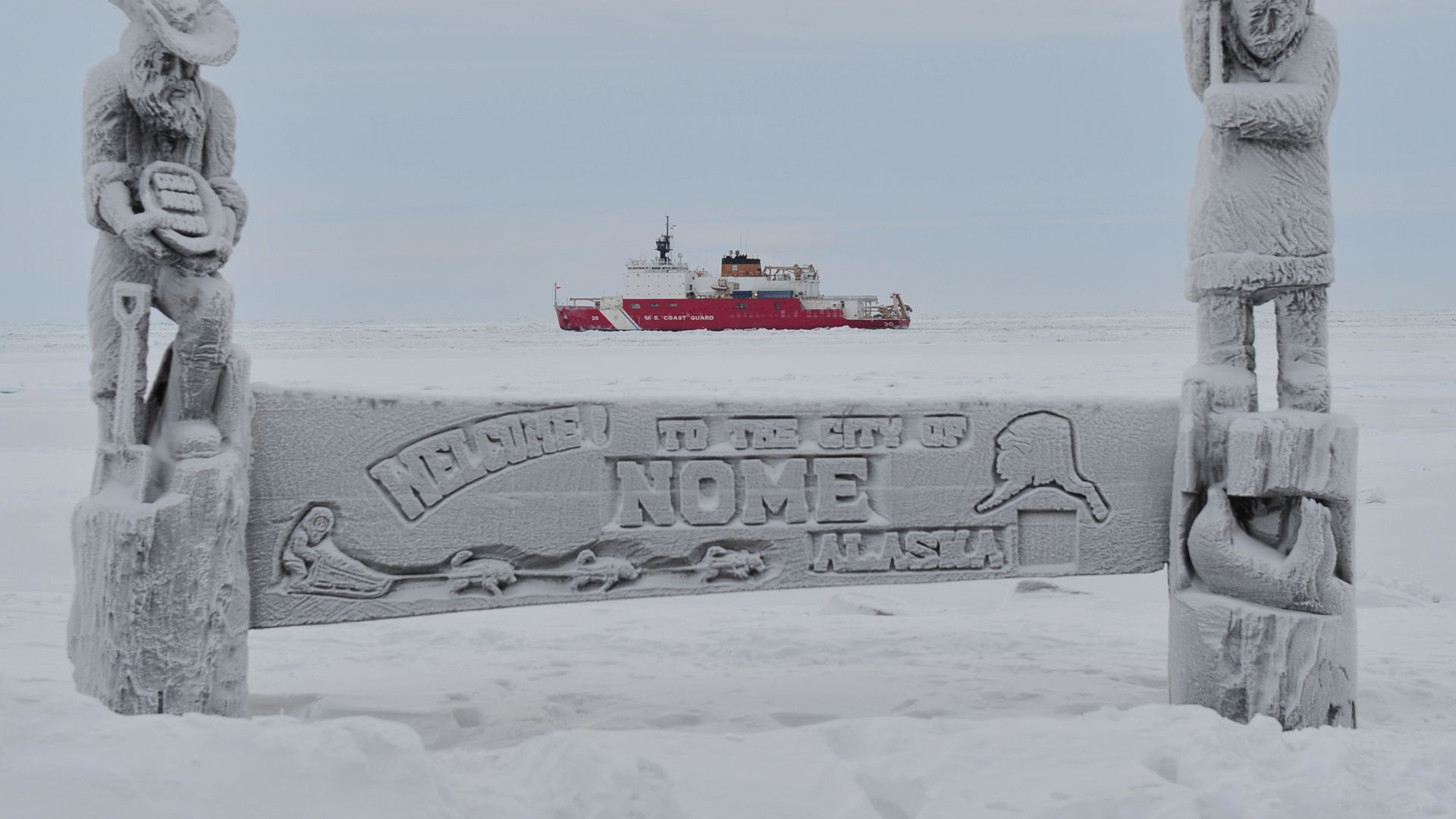
A SHOW OF FORCE AT THE EDGE OF THE WORLD. 11 WARSHIPS FROM CHINA AND RUSSIA WERE SPOTTED CARRYING OUT A JOINT NAVAL PATROL NEAR ALASKA.
THE BOLD MOVE IN EARLY AUGUST IS JUST THE LATEST PROVOCATION IN A REGION KNOWN FOR CHILLY RECEPTIONS.
Brookes: There’s really critically important elements of the geostrategic importance of Alaska and America’s place in the Arctic. And as things potentially change with climate, we need to be paying increasing attention to that.
PETER BROOKES IS A RETIRED NAVY COMMANDER, DEFENSE AND FOREIGN POLICY EXPERT.
Brookes: Well, I think it’s about time that we pay the attention, the necessary attention, to the Arctic. The Russians have been paying attention to it for a long time, and prior to their unjust, unprovoked invasion of Ukraine, they were spending a lot of time and effort on modernizing their military bases. If Russia were to attack the United States with ICBMs, those ICBMs would likely come over the pole.
DURING THE HEIGHT OF THE COLD WAR, RUSSIA OPERATED HUNDREDS OF ARCTIC BASES. HERE’S WHERE THEY ARE TODAY. NOTABLY LESS THAN DURING THE COLD WAR, BUT STILL MORE THAN THE U.S. AMERICAN ARMED FORCES HAVE NINE MILITARY BASES IN ALASKA, AND THEY’RE USED BY THE ARMY, AIR FORCE AND COAST GUARD. FOR RIGHT NOW, THOUGH, THERE’S NO NAVAL BASE.
Brookes: It’s a strategic place that has not gotten the attention because of the challenges of it. The weather challenges, the distance challenges. There’s no deep water port for the United States because that area where Nome is, is actually quite shallow.
WELCOME TO NOME, THE SITE OF THE LAST GREAT AMERICAN GOLD RUSH. THE SMALL VILLAGE IN NORTHWEST ALASKA WILL SOON HAVE A NEW CLAIM TO FAME: HOME TO THE FIRST DEEP WATER ARCTIC PORT IN THE UNITED STATES.
WORK WILL START NEXT YEAR ON A $600 MILLION PROJECT TO EXPAND NOME’S ARCTIC PORT IN THREE PHASES. THE PORT IN NORTHWEST ALASKA WILL SEE ITS DOCKING CAPACITY INCREASE FROM JUST THREE SHIPS UP TO TEN. A NEW, DEEPER BASIN WILL ALSO BE DREDGED. AT 40 FEET DEEP, THE NEW NOME PORT WILL BE ABLE TO HANDLE MUCH LARGER VESSELS, INCLUDING CRUISE SHIPS AND ANYTHING IN THE U.S. NAVY’S FLEET–EXCEPT FOR AIRCRAFT CARRIERS.
THE EXPANDED PORT WILL MAKE NOME THE CENTERPIECE OF U.S. STRATEGIC INFRASTRUCTURE IN THE ARCTIC.
Brookes: Military presence, and military capabilities, [are] always important for protecting, almost always anyway, for protecting American national interests. The hope is that we wouldn’t need to use that military force to support our diplomacy, or our economic interests in the Arctic.
ARCTIC DIPLOMACY WILL BE IN HIGH DEMAND IN THE YEARS AHEAD. THANKS TO CLIMATE CHANGE–THE NORTHERN SEAS ARE MORE CROWDED. THE NUMBER OF SHIPS TRANSITING BERING STRAIT SHIPPING LANES ALMOST DOUBLED OVER THE LAST DECADE, AND IT’S NOT JUST THE TRADITIONAL ARCTIC NATIONS THAT HAVE AN EYE TOWARDS THE REGION.
Brookes: Even China has talked about its access and its interest in the Arctic, saying it’s part of mankind’s or humankind’s common heritage. And they call themselves a near Arctic nation. They’ve built several icebreakers, and they have a couple of ships that make trips up there to do experimentation. I believe that China even has some scientific research places including European Arctic areas.
IT’S EASY TO UNDERSTAND WHY SO MANY NATIONS HAVE ARCTIC FEVER. IT’S ESTIMATED UP TO 13% OF THE EARTH’S OIL RESERVES ARE IN THE ARCTIC, ALONG WITH UNTOLD QUANTITIES OF OTHER NATURAL RESOURCES LIKE GOLD AND RARE EARTH ELEMENTS. AND OF COURSE, THERE ARE LOTS OF FISH. FISH THAT DON’T FOLLOW TERRITORIAL GUIDELINES OR PAY ATTENTION TO THINGS LIKE EXCLUSIVE ECONOMIC ZONES.
BROOKES SAYS THE ARCTIC IS UNLIKE ANY OTHER PLACE ON THE PLANET. THERE ARE VARIOUS OVERLAPPING CLAIMS TO TERRITORY AND THE UN STILL HASN’T SORTED THOSE OUT. IN 2007, RUSSIA EVEN PLANTED A TITANIUM FLAGPOLE ON THE ARCTIC SEABED AT THE NORTH POLE, 14,000 FEET BELOW THE SURFACE.
Brookes: Remember, instead of looking at a map and holding a globe in your hands, everything kind of comes together at the top. All of these interests and territorial claims, they can conflict.
IF AN ARCTIC TERRITORIAL DISPUTE LEAD TO A MILITARY ENGAGEMENT, AMERICA HAS A LOT OF FRIENDS CLOSE BY. THERE ARE EIGHT TRADITIONAL ARCTIC COUNTRIES, AND EXCEPT FOR RUSSIA, THEY’RE ALL NATO MEMBERS. EVEN IF CHINA, THE SELF-PROCLAIMED NEAR ARCTIC NATION, ESCALATED MILITARY TENSIONS IN THE REGION, THE US HAS PARTNERS IN THE INDO-PACIFIC LIKE JAPAN TO HELP KEEP THE PEACE.
Brookes: The United States is part of a number of partnerships and alliances, and burden sharing is important too. Sometimes countries have more capable forces in certain areas than others. Partnerships, alliances, friendships, they’re all very important.
FOR MORE UNBIASED, STRAIGHT FACT REPORTING ABOUT US MILITARY MATTERS, BE SURE TO CHECK OUT SAN.COM.






